pulsar broker load balance
Pulsar broker load balance 是如何设计的
原理
bundle
将 所有的 topic(partitioned topic) 分到 bundle 中,作为负载的单元,进行管理(split, unload-load)。
类比:mysql extent
consistent hash
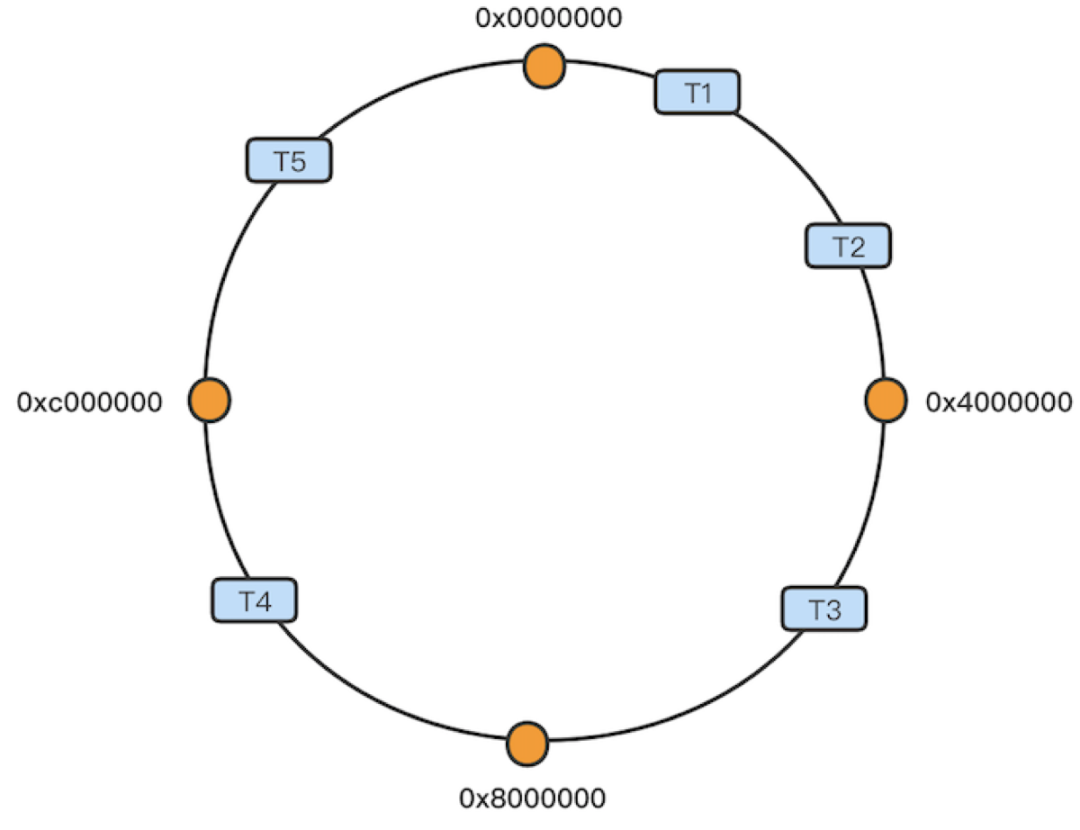
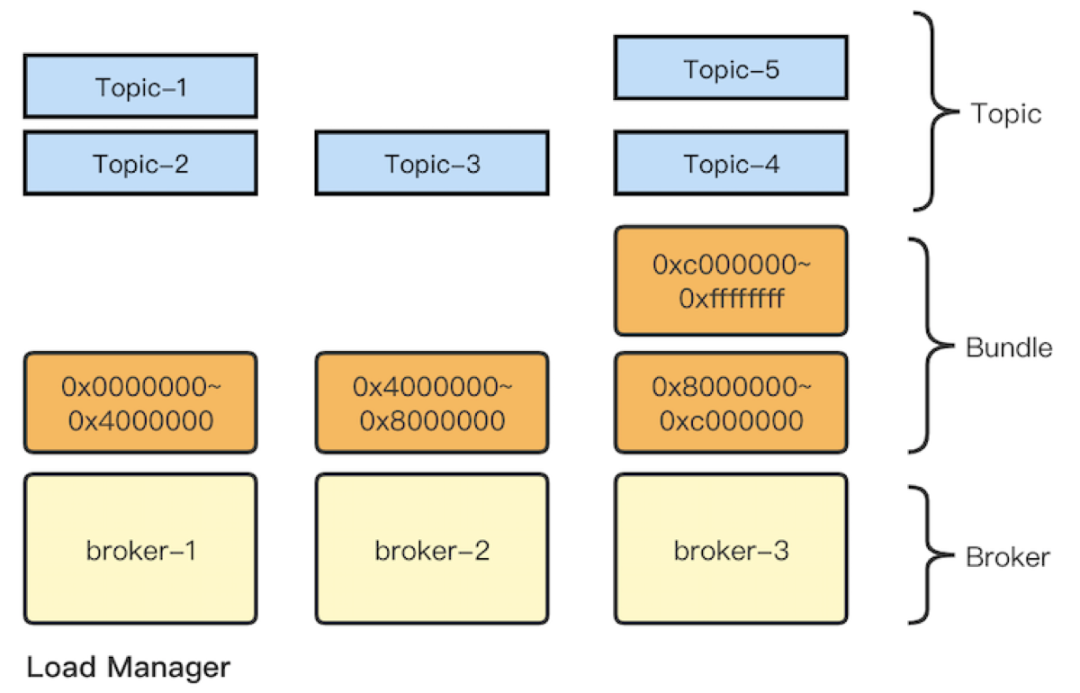
lookup
图中,描述了 client 启动时,为本地 topic 对象 绑定 broker url 的过程:
- 如果有 topic-bundle-broker 的关系,就返回。
- 如果没有,leader broker 从所有 broker 中挑选出一个,assign 目标 bundle,然后返回这个 broker。
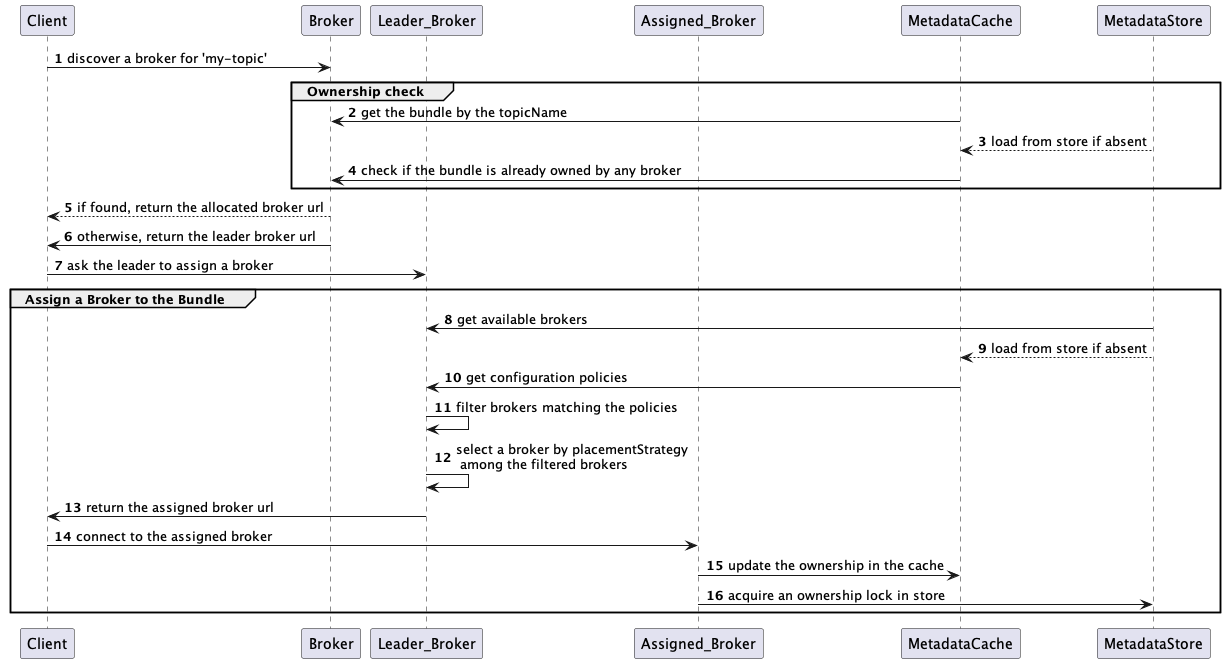
shedding strategies
OverloadShedder
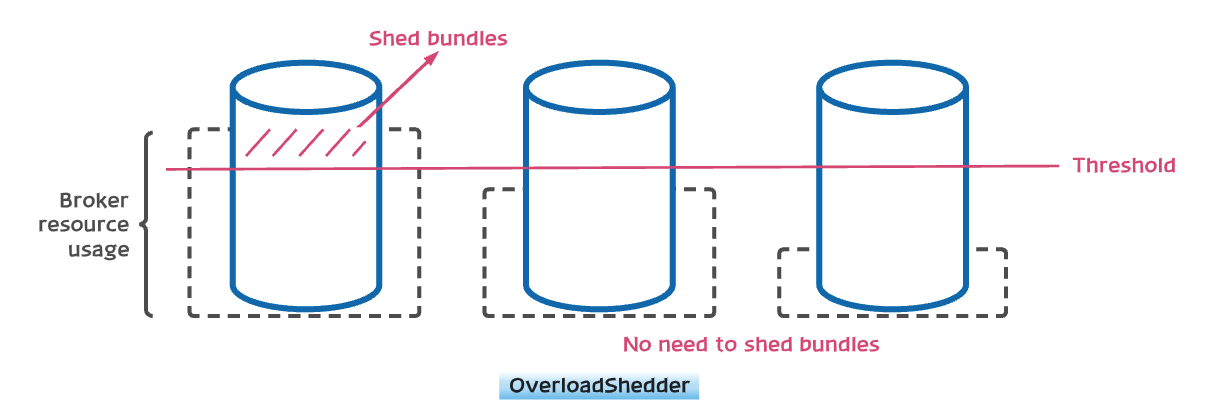
每个节点的负载不超过 指定阈值
缺点:
如果 阈值=90,broker 当前负载情况= (80,0,0)。此时,不会进行负载均衡。
ThresholdShedder
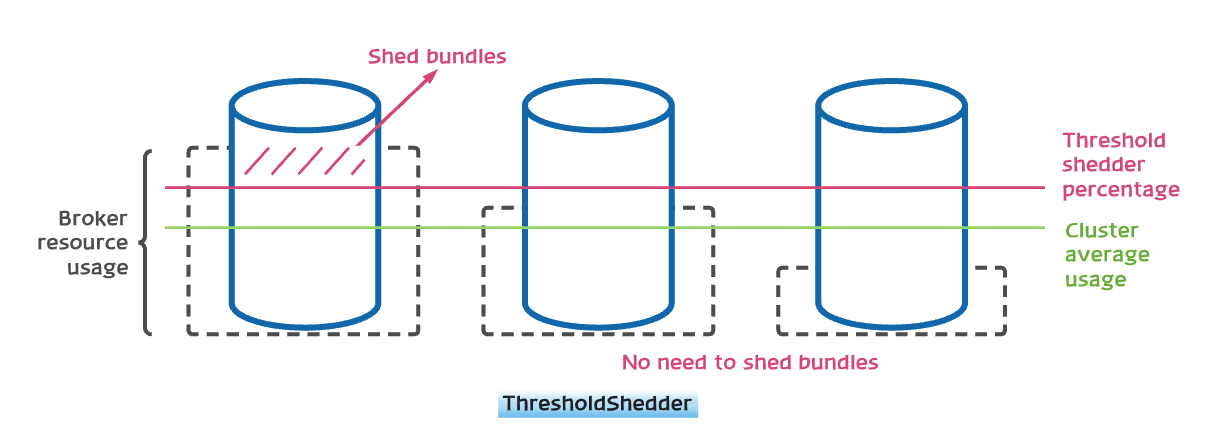
为了解决 OverloadShedder 的缺点,出现了 ThresholdShedder
每个节点的负载不超过 平均负载 + 指定阈值
- 计算平均负载
- 比较
current/historical和avg+loadBalancerBrokerThresholdShedderPercentage - offload 流量 =
cur - avg - threshold + 5%
UniformLoadShedder
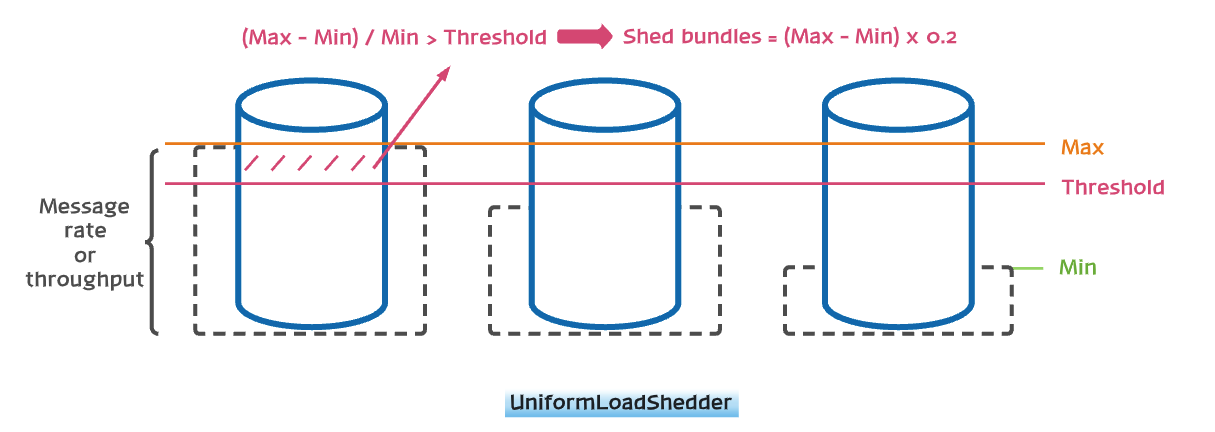
每个节点的负载不超过
(max-min)/min - 指定阈值,
如果超过,unload(max-min)*0.2的流量
前面两种配置 基于 系统资源使用量,
UniformLoadShedder 基于 msgRate, msgThrought。
maxUnloadPercentage = 0.2
// rate: max 超过 min 50%
// throughput: max 达到 min 的 4 倍
// 两个条件,满足任何一个,触发 unload
loadBalancerMsgRateDifferenceShedderThreshold=50
loadBalancerMsgThroughputMultiplierDifferenceShedderThreshold=4
最小 unload 阈值 = 1 MB | 1000 条
minUnloadMessageThroughput
minUnloadMessage
最大 unload 阈值 = 20%
minUnloadMessageThroughput
如何定义,收集 broker 的负载?
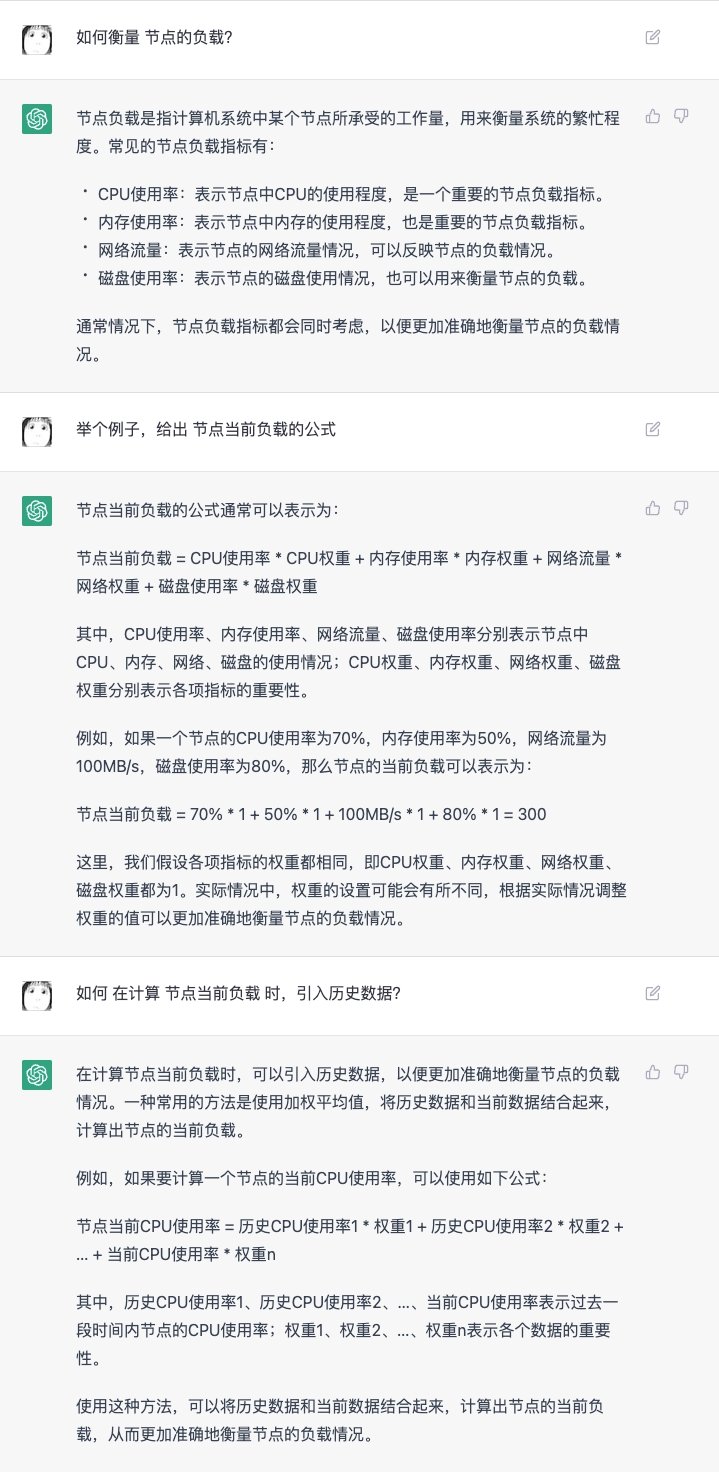
负载上报 配置
# Percentage of change to trigger load report update
loadBalancerReportUpdateThresholdPercentage=10
# minimum interval to update load report
loadBalancerReportUpdateMinIntervalMillis=5000
# maximum interval to update load report
loadBalancerReportUpdateMaxIntervalMinutes=15
# Frequency of report to collect
loadBalancerHostUsageCheckIntervalMinutes=1
# Interval to flush dynamic resource quota to ZooKeeper
loadBalancerResourceQuotaUpdateIntervalMinutes=15
演示
pulsar admin
https://docs.streamnative.io/pulsarctl/v2.9.2.3/#namespaces
# 看一下 3 个节点的 bundle 分布
# 查看 指定 broker 的 bundle 分布
pulsarctl brokers namespaces zaihui-pulsar --url ${ip}:8080 | jq
>
{
"public/default/0x20000000_0x30000000": {
"broker_assignment": "shared",
"is_controlled": false,
"is_active": true
},
...
}
# 查看 指定 namespaces 的 bundle 信息
pulsarctl namespaces policies public/default | jq
>
{
"bundles": {
"boundaries": [
"0x00000000",
"0x10000000",
"0x20000000",
"0x30000000",
"0x40000000",
"0x50000000",
"0x60000000",
"0x70000000",
"0x80000000",
"0x90000000",
"0xa0000000",
"0xb0000000",
"0xc0000000",
"0xd0000000",
"0xe0000000",
"0xf0000000",
"0xffffffff"
],
"numBundles": 16
},
...
}
# 查看 指定 topic 的 bundle
pulsarctl topics bundle-range smart.normal.download.topic.prod
>
The bundle range of the topic persistent://public/default/smart.normal.download.topic.prod is: 0xd0000000_0xe0000000
zkCli
查看 broker,bundle 的负载数据
>>> ls /loadbalance
[resource-quota, bundle-data, leader, brokers, broker-time-average]
public enum BrokerAssignment {
primary,
secondary,
shared
}
pulsar dashboard
也可以看到 bundle 的分配情况:
配置
默认 一个 namspace 切成 4 个 bundle
# conf/broker.conf
# When a namespace is created without specifying the number of bundle, this
# value will be used as the default
defaultNumberOfNamespaceBundles=4
# 创建 namespace 时,可以指定 budle 数
bin/pulsar-admin namespaces create my-tenant/my-namespace --clusters us-west --bundles 16
metrics
https://pulsar.apache.org/docs/next/reference-metrics#loadbalancing-metrics
pulsar_lb_bandwidth_in_usage
pulsar_lb_bandwidth_out_usage
pulsar_lb_cpu_usage
pulsar_lb_directMemory_usage
pulsar_lb_memory_usage
pulsar_lb_unload_broker_total
pulsar_lb_unload_bundle_total
pulsar_lb_bundles_split_total
pulsar_bundle_msg_rate_in
pulsar_bundle_msg_rate_out
pulsar_bundle_msg_throughput_in
pulsar_bundle_msg_throughput_out
pulsar_bundle_topics_count
pulsar_bundle_consumer_count
pulsar_bundle_producer_count
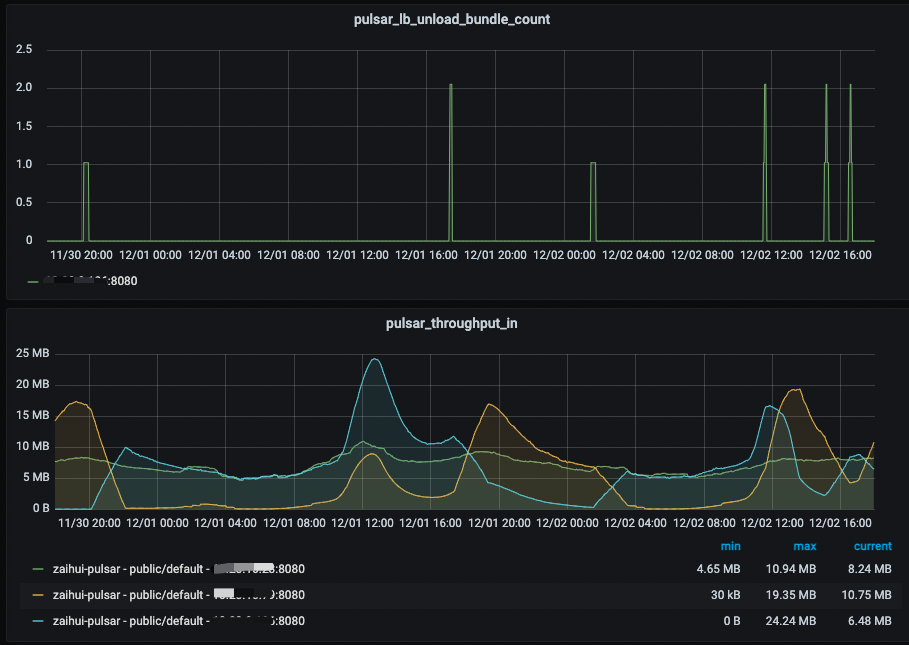
如何实现一个 load balancer?
- 定义 负载均衡的粒度
- topic (partitioned topic; physical topic) ?
- bundle ( batch of topics) ?
- msg ?
- 因为 broker 是有一点状态的,粒度达到 msg,cache 就失去效果了。
- (为了提高读取速度,在 broker 加了缓存,引入了状态。是一种“反模式”。)
- tailing read , catch-up read
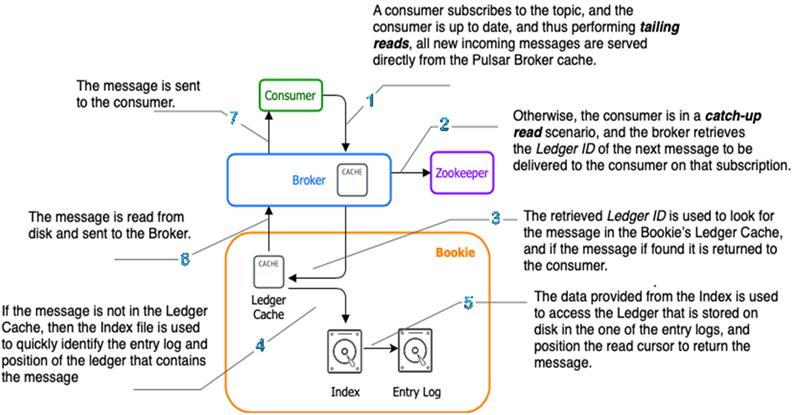
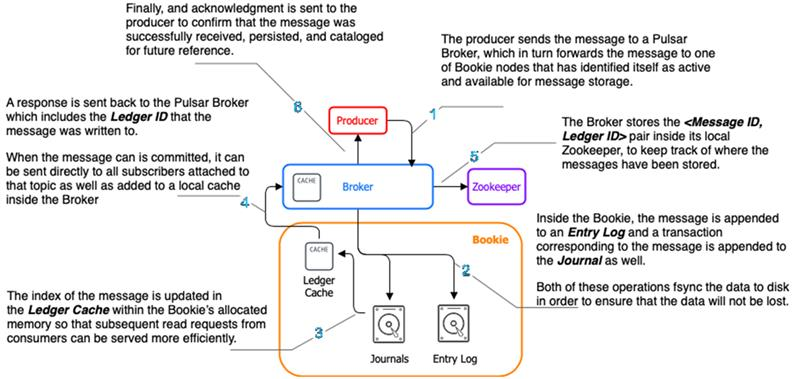
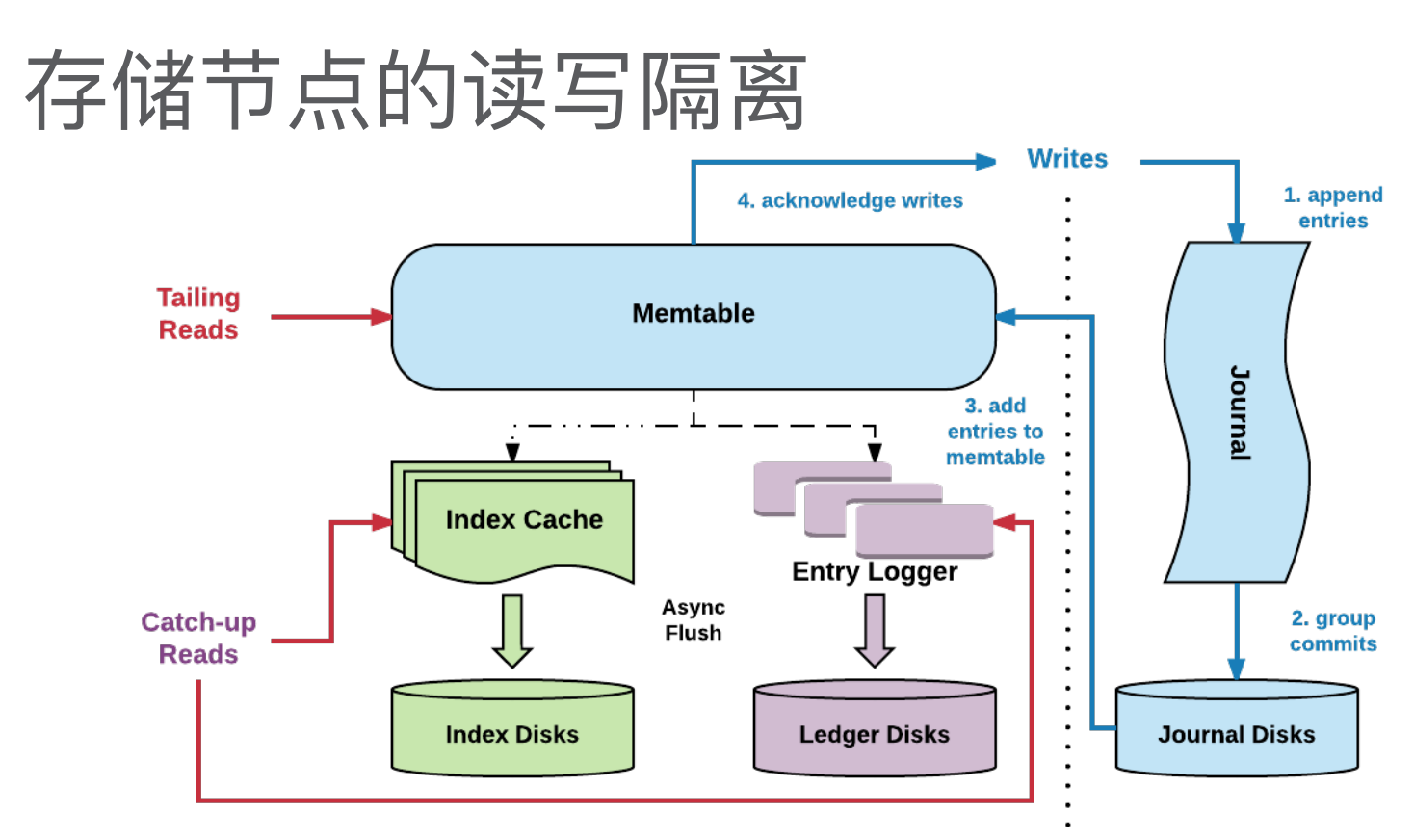
- 网关服务,可以做到更细的粒度。
- 集中式 session -> 分布式 session -> JWT
- pulsar 为什么要做 cache
- LSM Tree vs B+Tree
- 其他状态:topic - bookie
- 存算分离
- 如何 水平扩展?
- 一致性 hash
- 如何 计算 节点的负载?
- 不同指标 加权求和
- 类比:雨热同期
- 移动平均数
- 不同指标 加权求和
- 如何 避免 频繁的节点切换?
- 慢启动
- 如何 避免 流量的反复横跳?
- 设置 最小负载迁移阈值
- 保证 load 和 unload 的计算逻辑
一致
- 如何 尽可能地 降低 节点变更 导致的 不可用时间?
- 设置 最大负载迁移阈值
- 先算出目标节点,再 unload 流量
- 一致性保证
- read your write
一致性保证
类比 db:
pub:
insert into table_1
sub fetch:
select from table_1 where state=un_consumed limit 100
update table_1 set state=picked where id in (...)
sub ack:
update table_1 set state=consumed where id in (...)
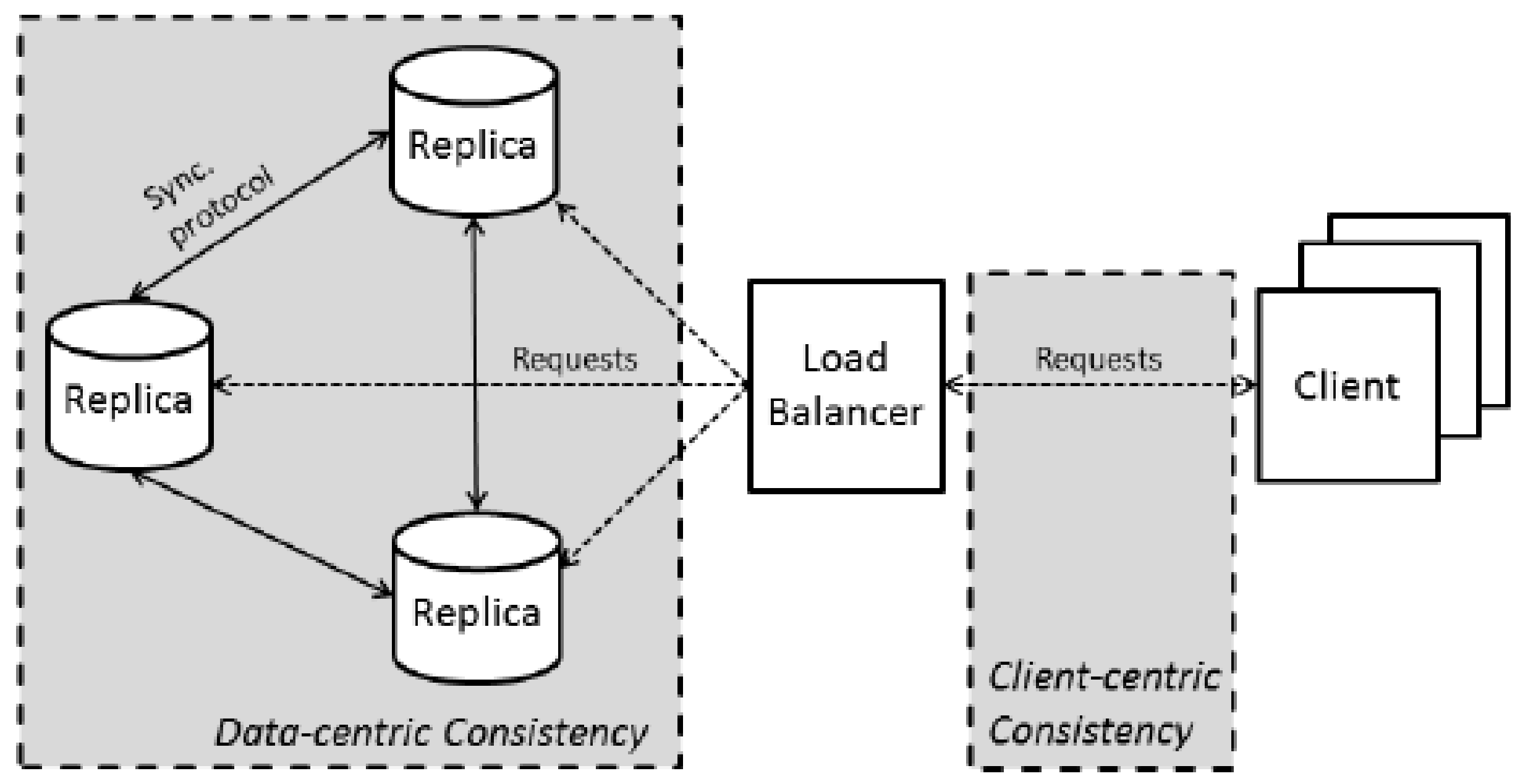
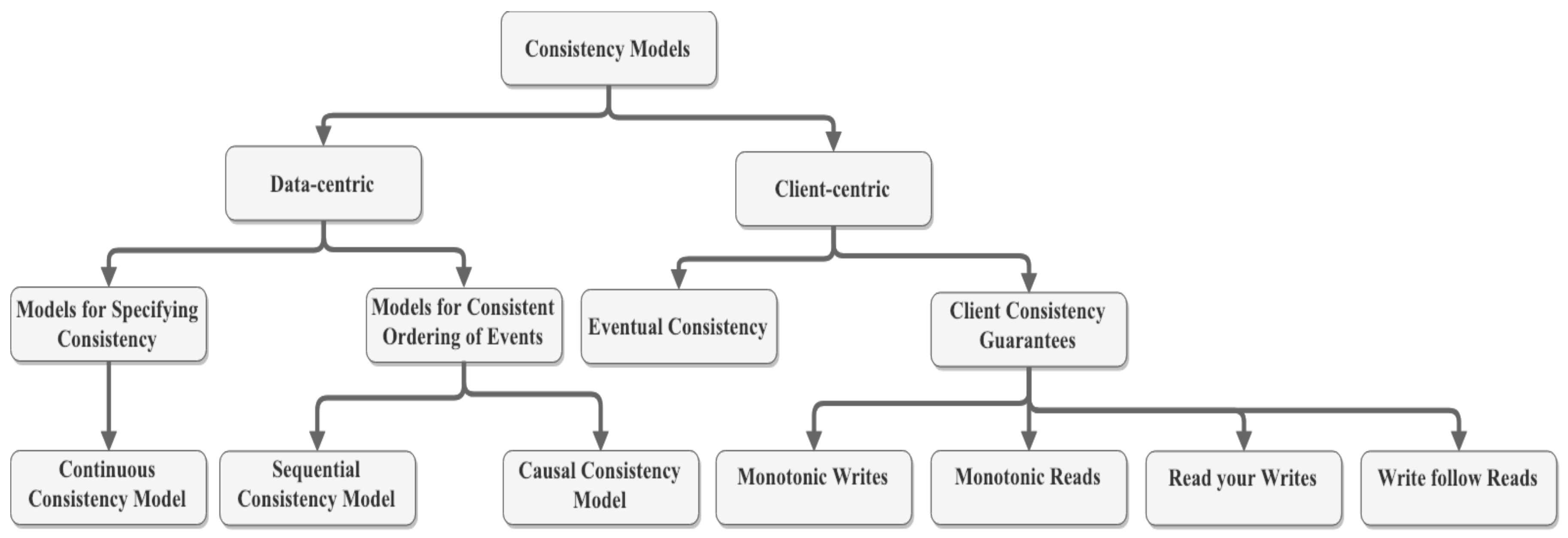
best practice
Apache Pulsar 在微信大流量实时推荐场景下实践
load 和 unload 逻辑不一致 导致 流量在 broker 之间反复横跳,
unload 根据 机器负载,
load 根据 消息量。
Apache Pulsar 在 BIGO 的性能调优实战(上)
unload 很慢。
推荐:
- 生产环境 关掉自动 split
- 预先规划,分配好 bundle
- 流量低的时候,手动 unload
代码实现
- org.apache.pulsar.broker.PulsarService#start
- org.apache.pulsar.broker.PulsarService#startLoadManagementService
- org.apache.pulsar.broker.loadbalance.LoadReportUpdaterTask#run
- org.apache.pulsar.broker.loadbalance.LoadManager#writeLoadReportOnZookeeper()
- LoadReportUpdaterTask
- LoadResourceQuotaUpdaterTask
- LoadSheddingTask
统计 broker 的负载,
写入 zk
broker 的负载:
org.apache.pulsar.policies.data.loadbalancer.SystemResourceUsage
// org.apache.pulsar.broker.loadbalance.impl.ModularLoadManagerImpl#writeBrokerDataOnZooKeeper(boolean)
public void writeBrokerDataOnZooKeeper(boolean force) {
...
brokerDataLock.updateValue(localData).join();
...
}
// dive:
store.put(path, payload, Optional.of(version), EnumSet.of(CreateOption.Ephemeral))
从 zk 读取 负载信息
// org.apache.pulsar.broker.loadbalance.impl.ModularLoadManagerImpl#updateAll
public void updateAll() {
if (log.isDebugEnabled()) {
log.debug("Updating broker and bundle data for loadreport");
}
cleanupDeadBrokersData();
updateAllBrokerData();
updateBundleData();
// broker has latest load-report: check if any bundle requires split
checkNamespaceBundleSplit();
}
// bundle Data
BrokerData.{LocalBrokerData}.{Map<String, NamespaceBundleStats>}
public void checkNamespaceBundleSplit() {
...
synchronized (bundleSplitStrategy) {
final Set<String> bundlesToBeSplit = bundleSplitStrategy.findBundlesToSplit(loadData, pulsar);
...
for (String bundleName : bundlesToBeSplit) {
...
pulsar.getAdminClient().namespaces().splitNamespaceBundle(namespaceName, bundleRange,
unloadSplitBundles, null);
...
}
}
}
read /loadbalance/brokers
update broker data
update bundle data
write /loadbalance/broker-time-average
refer
- https://pulsar.apache.org/docs/next/administration-load-balance/
- https://streamnative.io/blog/engineering/2022-07-21-achieving-broker-load-balancing-with-apache-pulsar/
- Apache Pulsar 在 BIGO 的性能调优实战(上)
- Consistency Models of NoSQL Databases
- https://livebook.manning.com/book/apache-pulsar-in-action/chapter-2/v-2/88
- https://www.youtube.com/watch?v=ShjDrvV3MNE&ab_channel=TheApacheFoundation
- Pulsar Broker Load Balance Improvement Areas
- Distribute the load balance decisions to local brokers
- Improve availability of topic while unloading
- …
- PIP-192: New Pulsar Broker Load Balancer
- 分布式系统中的“无状态”和“有状态”详解_tencent_cloud